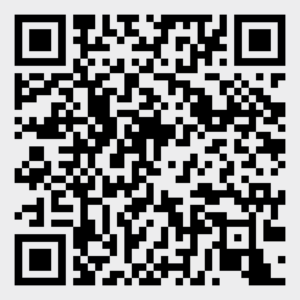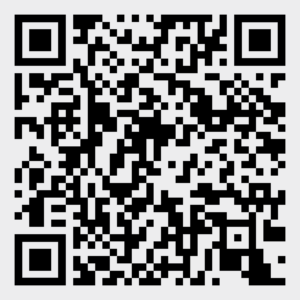Navigating with Data: Marketing Information Systems for Decision-Making
Summary
This chapter emphasized the critical role of data in modern marketing decision-making. It introduced marketing information systems (MIS) as an organized framework for collecting, analyzing, interpreting, and disseminating marketing data. This chapter outlined the four key components of an MIS — internal records, marketing intelligence systems, marketing research, and marketing decision support systems — and illustrated their practical application through examples like restaurant operations.
The chapter also explored the systematic process of marketing research, detailing its steps: problem identification, research plan development, data collection, analysis, presentation of findings, and decision-making. It highlighted the advantages and challenges of using both primary and secondary data sources while distinguishing between qualitative and quantitative research methods.
A significant focus was placed on customer relationship management (CRM) systems, which integrate with MIS to enhance customer engagement across the lifecycle stages — awareness, engagement, conversion, retention, loyalty, and advocacy. Real-world scenarios demonstrate how CRM systems enable personalized interactions and data-driven strategies in sectors such as hospitality.
Emerging trends in marketing research are also discussed, including AI-driven analytics, digital qualitative tools like virtual focus groups, and synthetic data for privacy-conscious studies. These innovations are reshaping how organizations gather insights and adapt to changing consumer behaviour.
Key Takeaways
- Marketing Information Systems (MIS): MIS provides a structured approach to transforming raw data into meaningful information for strategic decision-making. Its components — internal records, intelligence systems, research processes, and decision support tools — work together to offer a comprehensive view of market dynamics.
- Marketing Research: This process helps organizations address specific challenges by collecting relevant data through primary or secondary sources. While primary data offers tailored insights through methods like surveys or focus groups, secondary data provides cost-effective background information from existing sources.
- Qualitative vs. Quantitative Data: Qualitative methods explore motivations and attitudes through open-ended tools like interviews or observations. Quantitative methods provide measurable insights using structured tools like surveys or experiments.
- CRM Systems: CRM platforms centralize customer data to improve interactions at every stage of the customer lifecycle — from initial awareness to loyalty advocacy. They integrate seamlessly with MIS to enhance strategic alignment across departments.
- Emerging Trends: Innovations such as AI-powered analytics enable predictive modeling and hyper-personalization. Digital qualitative tools expand access to diverse perspectives while synthetic data addresses privacy concerns.
Exercises
Check your Understanding
Exercise 1: Marketing Information Systems Components
Scenario: You are a marketing manager at a boutique hotel in Vancouver.
Task: Identify examples of each MIS component for your hotel.
Recommended Answer
- Internal Records:
- Guest booking data and occupancy rates
- Revenue per available room (RevPAR)
- Customer feedback forms
- Loyalty program membership data
- Marketing Intelligence:
- Competitor rate monitoring
- Industry trend reports
- Social media sentiment analysis
- Travel industry news updates
- Marketing Research:
- Guest satisfaction surveys
- Focus groups for new amenity offerings
- Website usability studies
- Market demand analysis
- Marketing Decision Support:
- Pricing optimization tools
- Demand forecasting models
- Customer segmentation analysis
- Revenue management systems
Exercise 2: Primary vs. Secondary Data
Task: For each research objective below, indicate whether primary or secondary data would be more appropriate and explain why.
- Understanding current market size
- Testing new menu items
- Analyzing competitor pricing
- Evaluating customer service satisfaction
Recommended Answer
- Secondary — Existing industry reports and government statistics can provide this information cost-effectively
- Primary — Direct customer feedback needed through taste tests and surveys
- Secondary — This information is publicly available and can be gathered through market observation
- Primary — Direct feedback needed through surveys or interviews to understand specific experiences
Exercise 3: Qualitative Research Design
Scenario: A resort wants to understand why guests choose their property over competitors.
Task: Design a qualitative research approach by:
- Selecting appropriate research methods
- Identifying key questions to ask
- Determining the target participants
Recommended Answer
- Methods: In-depth interviews and focus groups
- Key Questions:
- “What factors influenced your decision to book with us?”
- “How does our resort differ from others you have visited?”
- “What amenities or services were most important in your decision?”
- Target Participants:
- Recent first-time guests
- Repeat customers
- Travel agents who book with the resort
Exercise 4: Data Collection Challenges
If you are using a printed copy, you can scan the QR code with your digital device to go directly to Exercise 4: Data Collection Challenges

Exercise 5: CRM Lifecycle Analysis
Scenario: A tour operator wants to improve customer relationships across the lifecycle.
Task: Identify one CRM strategy for each stage of the customer lifecycle.
Recommended Answer
- Awareness: Targeted social media campaigns based on customer demographics
- Engagement: Personalized email newsletters with relevant travel content
- Conversion: Special offers based on browsing history
- Retention: Post-trip follow-up surveys and personalized thank-you notes
- Loyalty: VIP program with exclusive benefits for repeat customers
- Advocacy: Referral rewards program and user-generated content campaigns
Exercise 6: Multiple Choice Questions
If you are using a printed copy, you can scan the QR code with your digital device to go directly to Exercise 6: Multiple Choice Questions

Further Learning
Marketing Research Resources
Gapminder (known for debunking common myths about global development) provides free visual tools and resources, making complex global data understandable through interactive graphs and charts.
Our World in Data offers an extensive collection of charts, maps, and data insights on major global issues. It is highly regarded for its thorough datasets and visualizations, which can be useful in understanding trends and patterns in various sectors including tourism (e.g., international travel impacts and economic contributions).
UNWTO (United Nations World Tourism Organization) eLibrary offers access to books, journals, and statistics on tourism sector performance, including detailed international tourism data.
WTTC (World Travel & Tourism Council) Data Gateway provides research on the economic and social impact of the tourism industry, including detailed annual research reports.
Statista provides access to data on 80,000 topics from over 18,000 sources, covering various industry sectors, including extensive tourism market data.
Tourism Economics specializes in economic analysis related to travel and tourism, providing data on travel demand, forecasts, and economic impacts.
World Bank Open Data provides free and open access to global development data, including tourism indicators like international arrivals and receipts.
Eurostat, the statistical office of the European Union, offers a range of statistical information, including detailed tourism statistics.
OECD iLibrary is a source of statistical data and research on economic and social topics, providing comprehensive data on tourism economics and policies.
UN Data is a comprehensive data source offering a wide range of international statistics, including tourism-related data collected by the UN.
IMF eLibrary Data Portal offers extensive macroeconomic data which is crucial for analyzing economic trends relevant to the tourism sector.
NationMaster is a comprehensive statistical database that allows easy comparison of various statistics, including tourism metrics, across countries.
Glossary of Key Terms
Artificial Intelligence (AI): The use of computer systems to simulate human intelligence, enabling tasks such as data analysis, predictive modeling, and automation in marketing research.
Bias: A systematic error in data collection that can distort research findings, such as selection bias (non-representative sampling) or response bias (inaccurate participant responses).
Customer Relationship Management (CRM): A system or strategy for managing interactions with current and potential customers, enhancing relationships across the customer lifecycle.
Data: Raw, unorganized facts and figures without context, such as numbers, symbols, or text.
Digital Qualitative Research: The use of online tools and platforms to collect qualitative data, such as virtual focus groups or social media analytics.
Environmental Scanning: The continuous monitoring of the business environment to identify trends, opportunities, and competitive actions.
Experiments: A research method where variables are controlled and manipulated to test cause-and-effect relationships in marketing scenarios.
Focus Groups: A qualitative research method where a moderator leads a small group discussion to gather insights about products, services, or concepts.
Information: Data that has been processed and organized to provide meaning and insights for decision-making.
Internal Records: Data generated within an organization, such as sales data, customer interactions, and financial records.
Interviews: A qualitative research method involving one-on-one conversations to gather detailed information about opinions, experiences, and preferences.
Marketing Decision Support System (MDSS): Tools that assist marketing managers in analyzing data through statistical analysis, modeling, and simulations to make informed decisions.
Marketing Information System (MIS): An organized framework for collecting, analyzing, interpreting, storing, and disseminating marketing data to support decision-making.
Marketing Intelligence System: A component of MIS used to monitor external environments for trends, opportunities, and threats.
Marketing Research: A systematic process of collecting, analyzing, and interpreting data to address specific marketing challenges or opportunities.
Observational Research: A method of collecting data by watching and recording behaviour in natural settings without direct interaction.
Primary Data: Original data collected specifically for a research project through methods like surveys, interviews, or experiments.
Qualitative Data: Non-numerical information that explores motivations and attitudes through methods like interviews or focus groups.
Quantitative Data: Numerical information that can be measured and analyzed statistically to identify patterns and trends.
Secondary Data: Pre-existing data collected for another purpose but repurposed for current research needs. Examples include government reports or industry publications.
Survey: A research method using structured questions to collect data from a sample of respondents.
Synthetic Data: Artificially generated data that mimics real-world responses while addressing privacy concerns and data scarcity.
Web Analytics: Tools and methods used to measure and analyze website traffic and user behaviour.

